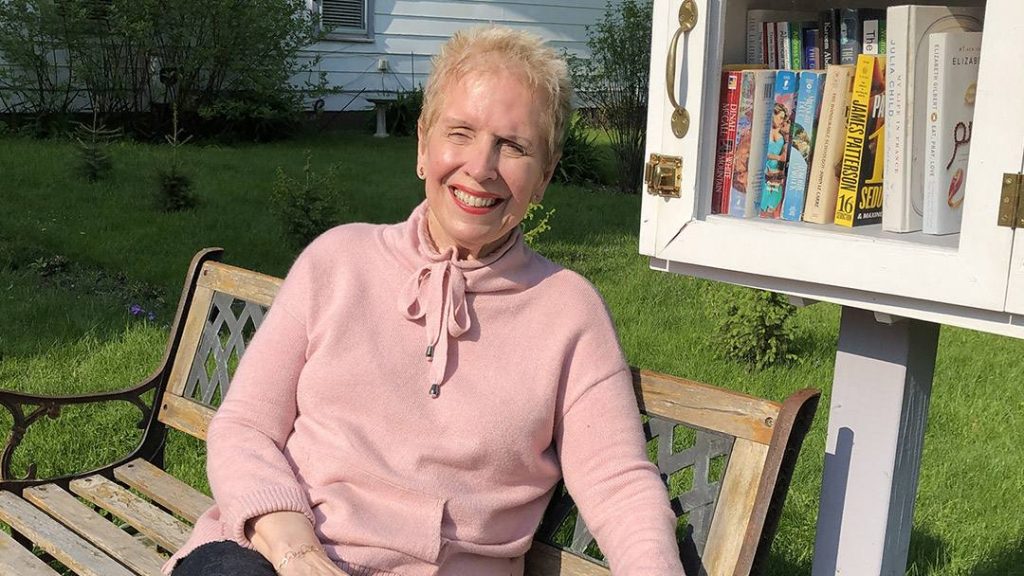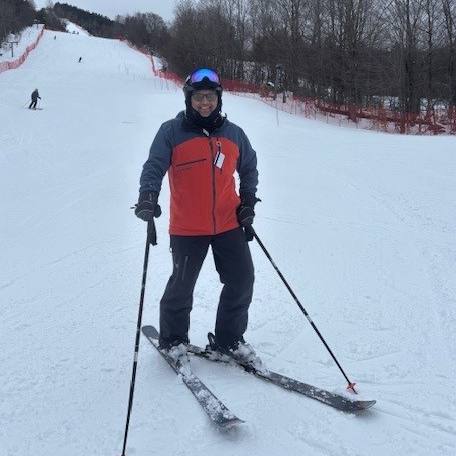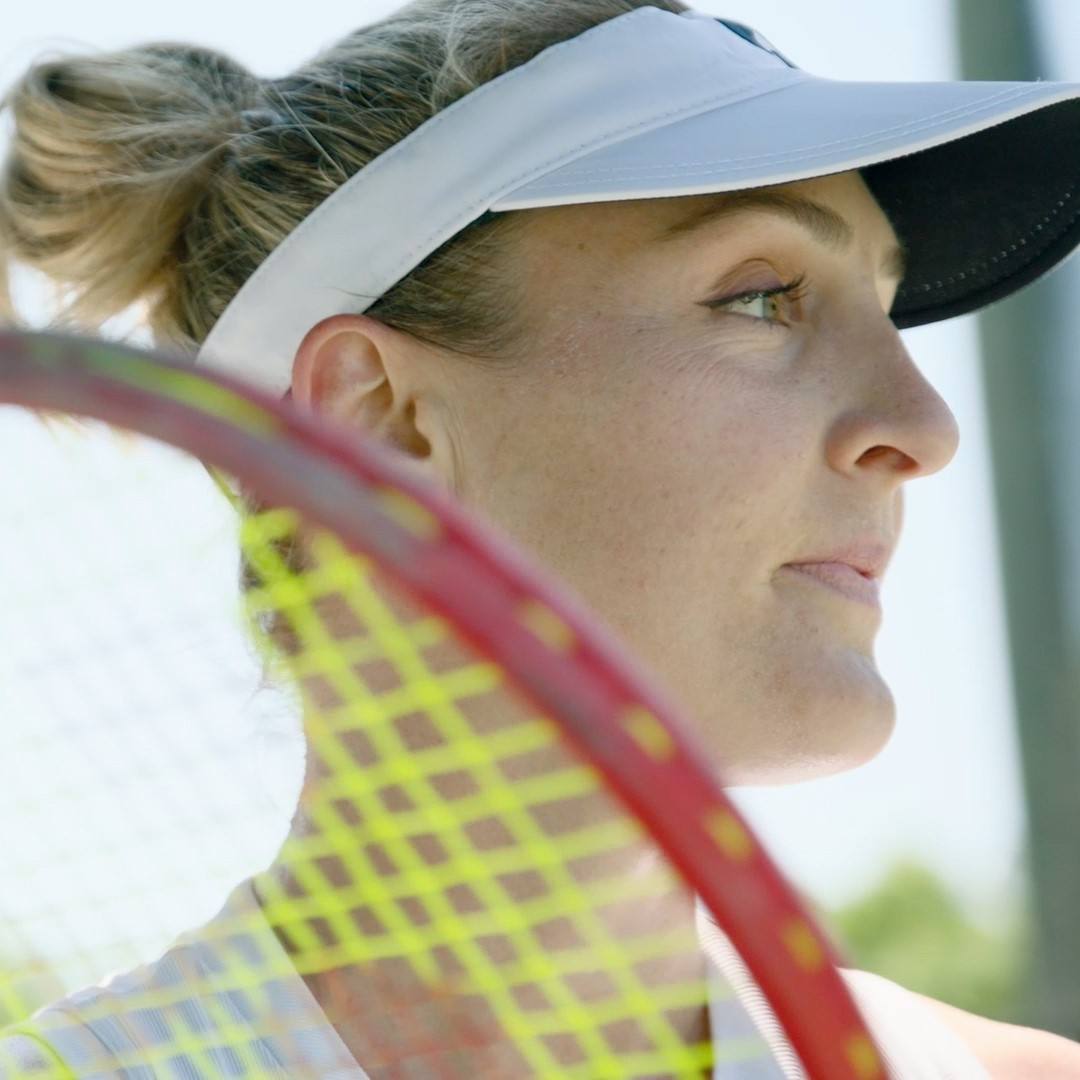
When Susan Roupp's tongue began cramping, she looked to Mayo Clinic to find the cause of this strange symptom. During her care team's investigation, they uncovered a mass in Susan's cheek that turned out to be an aggressive cancer. In addition to being grateful for the quick diagnosis and expert care, Susan was impressed by the empathy she received from her entire Mayo team.
In September 2018, Susan Roupp developed an odd problem. She began getting cramps in her tongue. This strange symptom bothered the University of Wisconsin professor enough to seek medical care for it. But when health care providers in her hometown of Marshfield, Wisconsin, couldn't figure it out, Susan decided to make the 3½ hour drive to Mayo Clinic's Rochester campus for answers.
"I had never been to Mayo, but I thought, 'That's the place where I'll find out why this is happening,''' Susan says.
At Mayo Clinic, Susan met with neurologist Andrea Leep Hunderfund, M.D. and neurology resident Stuart McCarter, M.D., who recommended an MRI of Susan's head and neck. As a result of that test, Susan learned the issue with her tongue was a long-term side effect of the radiation therapy she had undergone as a 12-year-old to treat severe acne. The radiation had affected the nerves that help control the tongue's movement.
But the cause of her tongue cramps wasn't the only finding. The imaging also revealed that Susan had a small salivary gland tumor near her left cheekbone.
"There wasn't a whole lot to go on initially, but her tongue was bothering her. So we probed a little bit deeper with the MRI," says Eric Moore, M.D., a head and neck cancer surgeon and facial plastic and reconstructive surgeon, in the Department of Otorhinolaryngology/Head and Neck Surgery. "Even though the tumor didn't look very ominous, we got a biopsy of it, which showed it was malignant. We might not have found it if we hadn't investigated the issue with her tongue."
The importance of empathy
Dr. Moore recommended surgery to remove Susan's tumor and scheduled the procedure for Jan. 9. "Dr. Moore was so empathetic and encouraging. When I went in for the surgery, I was nervous. I didn't know what to expect," Susan says. "Dr. Moore came to see me and told me, 'I'll take very good care of you.' At that moment, I relaxed. I just knew I was in good hands."
Salivary gland tumors are rare, representing less than 1% of all cancers. They can happen across a broad age range, but most occur in people in their 50s and 60s. Susan's tumor was in an area of her cheek where nerves that move the muscles responsible for facial expression were located.
"We wanted to make sure she didn't have a lot of effects from the surgery," Dr. Moore says. "So we approached the mass through a facelift-type incision, a more cosmetic approach than we would typically use."
A joint decision
During the surgery, Dr. Moore took a sample of the tumor and sent it to the Frozen Section Pathology Lab to have it analyzed. When the results came back 10 minutes later, they revealed the 0.6-millimeter mass was an aggressive form of cancer.
"There are over 20 different types of salivary cancers. Mrs. Roupp had a rare subtype — salivary duct carcinoma — which looks like breast cancer under the microscope," says Mayo Clinic oncologist Katharine Price, M.D., who specializes in salivary gland tumors.
"It was reassuring to know that whatever happened, it would be taken care of at Mayo."
Susan Roupp
"A lot of times, these salivary cancers will require radiation therapy. We spent a lot of time talking about that and chemotherapy," Dr. Price says. "Walking through these decision points with patients takes time. We're fortunate at Mayo that we can spend that time with patients and jointly make a decision as to what is right for them."
Susan was grateful for that approach. "Dr. Price is so kind. When you meet her, you have the sense of meeting an old friend. She talks with you and asks about your life and what you do," Susan says. "I trust Dr. Price. It was reassuring to know that whatever happened, it would be taken care of at Mayo."
Because her cancer was small and contained, and the tumor was completely taken out during surgery, Susan and Dr. Price decided it wasn't necessary to pursue aggressive treatment that could permanently affect Susan's quality of life.
Shared joy
Two months after her surgery, Susan had a full body positron emission tomography scan to check for any remaining cancer. "Dr. Moore came into the exam room beaming to give me the wonderful news that there was no cancer anywhere else in my body," Susan says. "He's fully aware that there's a human being he's dealing with who has a life, and that life is what he's preserving."
"It's impossible to perform a surgery without feeling like you're in partnership with that person," Dr. Moore says. "When things go well, the second happiest person in the room is me."
"Hope exists, care exists and empathy exists at Mayo."
Susan Roupp
At another follow-up in May, Susan had a head and neck MRI, and it showed her to be cancer-free. Now Susan, who teaches a class on memoir writing and wrote the book "Memoir Writing in 6 Easy Steps," is working to help others share their stories.
"There’s a four-letter word I'm very fond of, and it’s called hope. Mayo gave me hope." Susan says. "Feeling like I had backup on a fundamental issue like my health relieved the worry of what will happen. It enables me to use that energy to help other people find meaning in their life by writing a memoir. Hope exists, care exists and empathy exists at Mayo."
HELPFUL LINKS
- Learn more about salivary gland tumors.
- Visit the Department of Otorhinolaryngology/Head and Neck Surgery.
- Check out Mayo Clinic Cancer Center.
- Connect with others talking about head and neck cancer on Mayo Clinic Connect.
- Explore Mayo Clinic.
- Request an appointment.







